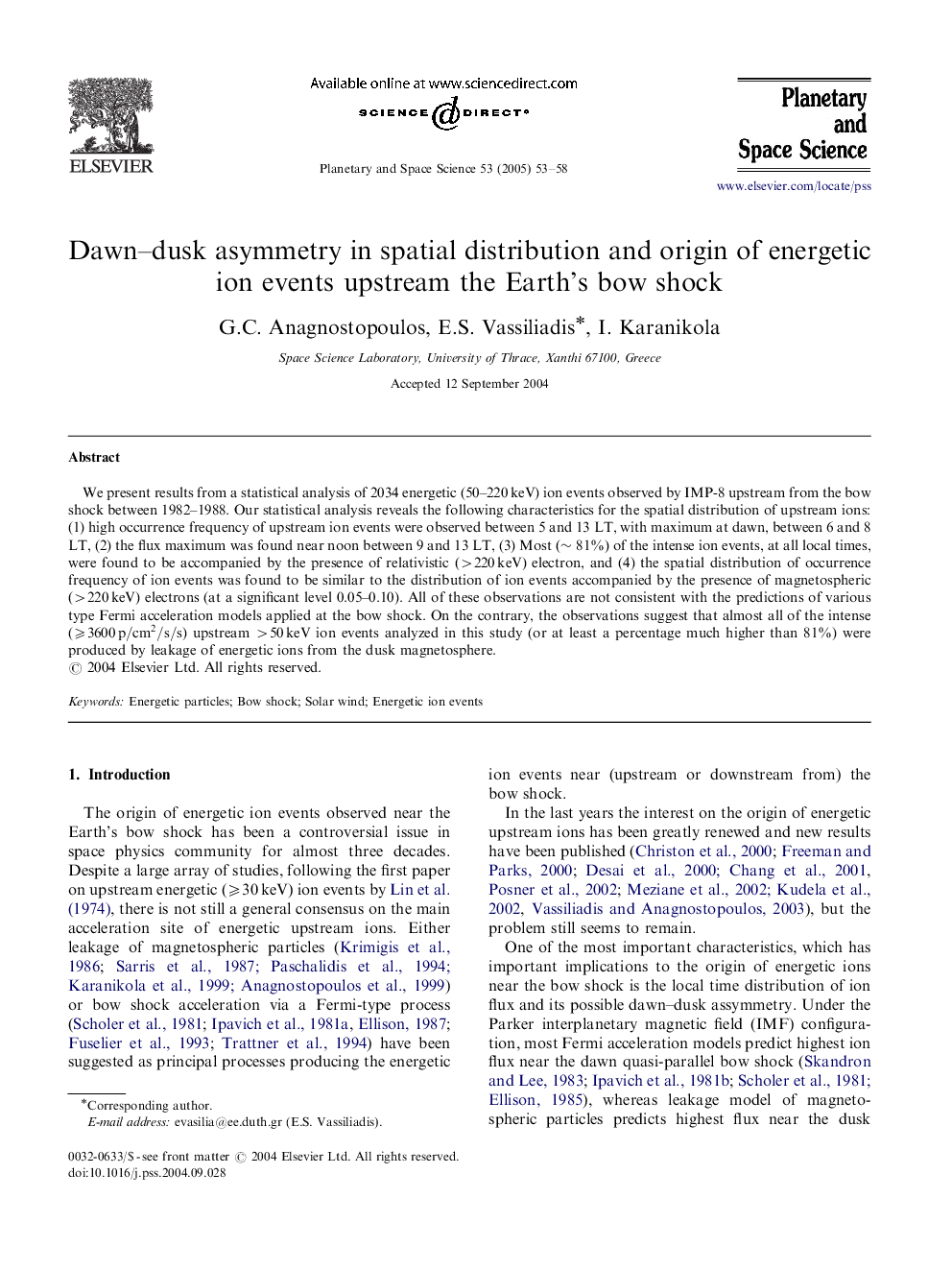| Article ID | Journal | Published Year | Pages | File Type |
|---|---|---|---|---|
| 9828581 | Planetary and Space Science | 2005 | 6 Pages |
Abstract
We present results from a statistical analysis of 2034 energetic (50-220 keV) ion events observed by IMP-8 upstream from the bow shock between 1982-1988. Our statistical analysis reveals the following characteristics for the spatial distribution of upstream ions: (1) high occurrence frequency of upstream ion events were observed between 5 and 13 LT, with maximum at dawn, between 6 and 8 LT, (2) the flux maximum was found near noon between 9 and 13 LT, (3) Most (â¼81%) of the intense ion events, at all local times, were found to be accompanied by the presence of relativistic (>220keV) electron, and (4) the spatial distribution of occurrence frequency of ion events was found to be similar to the distribution of ion events accompanied by the presence of magnetospheric (>220keV) electrons (at a significant level 0.05-0.10). All of these observations are not consistent with the predictions of various type Fermi acceleration models applied at the bow shock. On the contrary, the observations suggest that almost all of the intense (⩾3600p/cm2/s/s) upstream >50keV ion events analyzed in this study (or at least a percentage much higher than 81%) were produced by leakage of energetic ions from the dusk magnetosphere.
Related Topics
Physical Sciences and Engineering
Earth and Planetary Sciences
Geophysics
Authors
G.C. Anagnostopoulos, E.S. Vassiliadis, I. Karanikola,
